Plug and play Mitsubishi Outlander
Mitsubishi hopes Australians plug into its new Outlander PHEV.
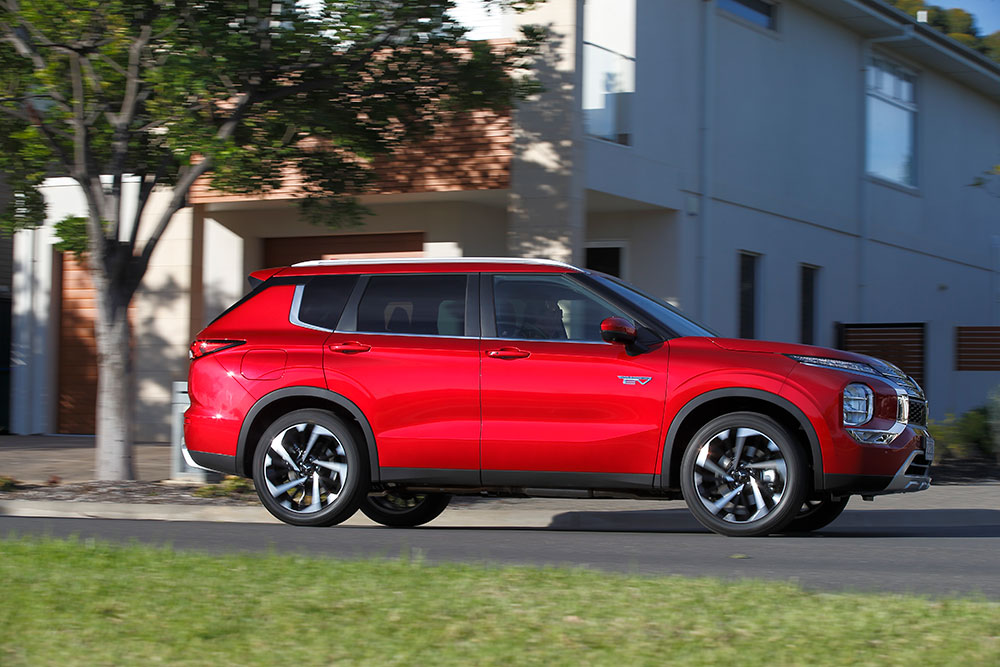
Months after the release of its all-new internal combustion-powered Outlander range, Mitsubishi is finally preparing to launch the much-anticipated Outlander Plug-In Hybrid EV (PHEV).
Due on sale from mid-August, the Outlander PHEV range will be available in four model grades, starting with the entry-level ES variant, progressing through Aspire, Exceed and flagship Exceed Tourer grades.
All variants are powered by a new-generation PHEV system that offers up to 84km (NEDC) of pure electric driving, with a choice of five- or seven-seat layouts, although the compact third row is described by Mitsubishi as a five-plus-two seat configuration.
Manufacturer recommended retail pricing kicks off at $54,590 for the ES five-seat model, rising to $60,990 for the Aspire five-seater.
The entry-level seven-seater is the Exceed 5+2, costing $65,990, with the top-of-the-line Exceed Tourer 5+2 costing $68,490.
Mitsubishi claims the new PHEV drivetrain is smoother, more responsive and quieter, with sharper acceleration and longer EV-only driving range than the equivalent unit fitted to the previous generation Outlander PHEV, which debuted in Australia in 2014.
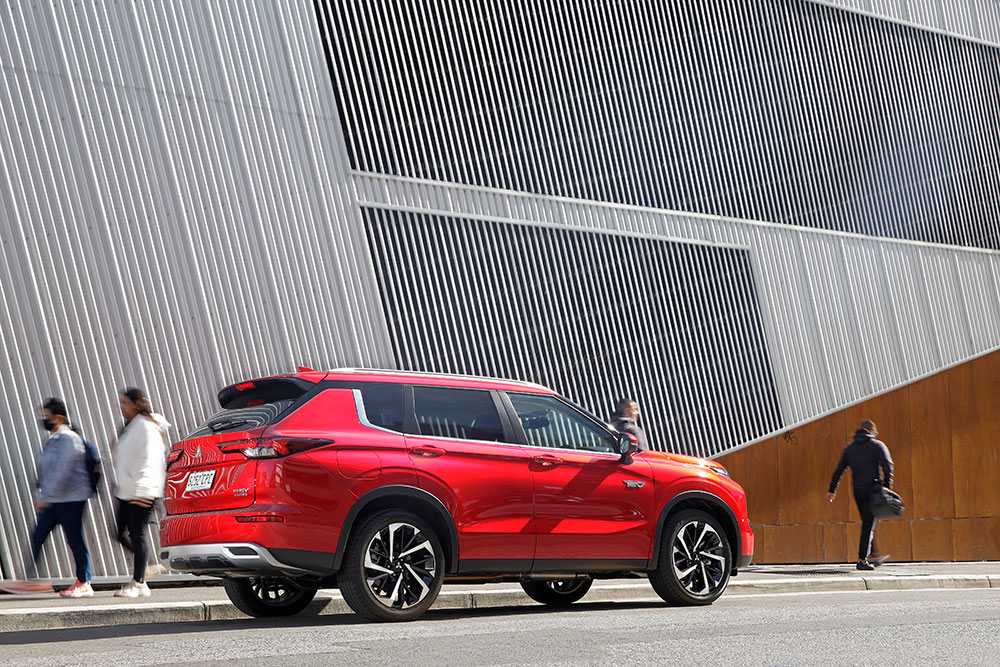
The powertrain comprises a new-generation 20.0kWh lithium-ion battery pack, twin electric motors, and a revised, Atkinson cycle 2.4-litre combustion engine.
The new drive battery pack is 45% larger than the previous version’s 13.8kWh combination and delivers a claimed pure electric driving range of up to 84km (NEDC).
The 2.4-litre petrol Atkinson cycle combustion engine’s combined cycle fuel consumption is 1.5L/100km (NEDC).
The engine acts primarily as an on-board generator (or range extender) in series hybrid mode but is also capable of driving the front wheels directly in parallel hybrid mode, at cruising speed or under high load driving.
The Outlander PHEV features Mitsubishi’s Super-All Wheel Control AWD (S-AWC) system, with twin electric motors located at either axle.
The power output of the front-mounted motor has been boosted by 25kW to 85kW versus the previous model, while the rear motor boasts a higher 100kW power output, compared with 70kW previously.
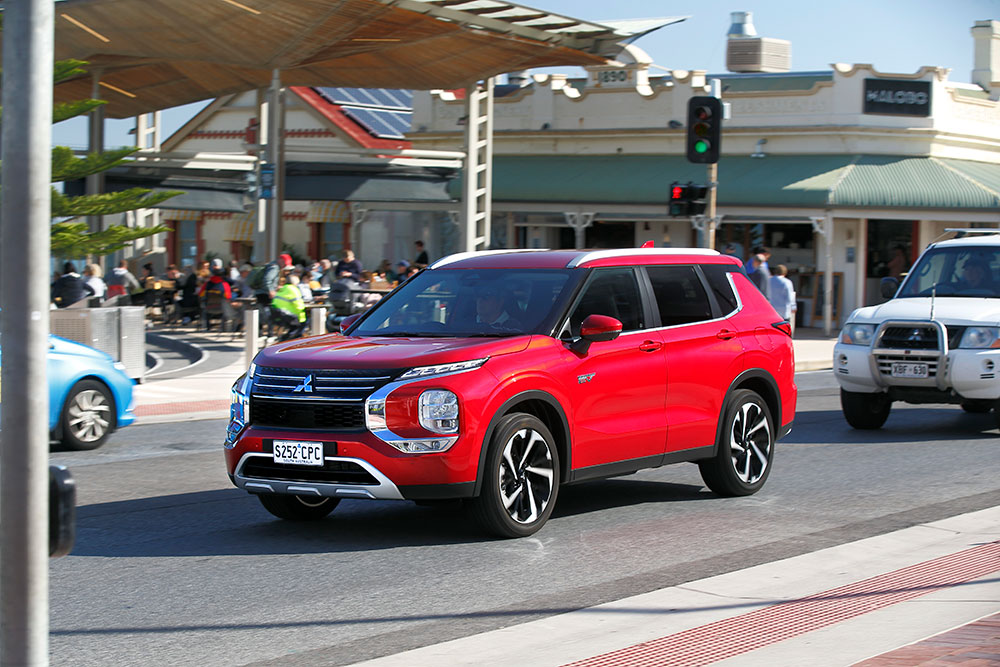
Along with the updated combustion engine generating 4kW more power at 98kW, the new Outlander PHEV’s combined maximum power and torque outputs are 185kW/450Nm.
Mitsubishi said the rear electric motor’s new, integrated motor control unit was more compact, which enabled the Outlander PHEV Exceed and Exceed Tourer variants to offer three-row, five-plus-two seating for the first time.
The twin e-motor S-AWC all-wheel drive system is claimed to deliver more instant torque response than a conventional tail shaft driven AWD system.
Other engineering changes include a new battery cooling system, an upgraded power drive unit with voltage boost function for the front e-motor and a reinforced differential that allows the PHEV to turn up its regenerative braking capability.
The six regeneration levels can be adjusted by the driver pulling a steering-wheel mounted ‘gear’ paddle, with a new feature being a centre-console button that allows for single pedal driving, engaging maximum energy regeneration so that the vehicle slows rapidly, as if under brakes, when the driver decelerates.
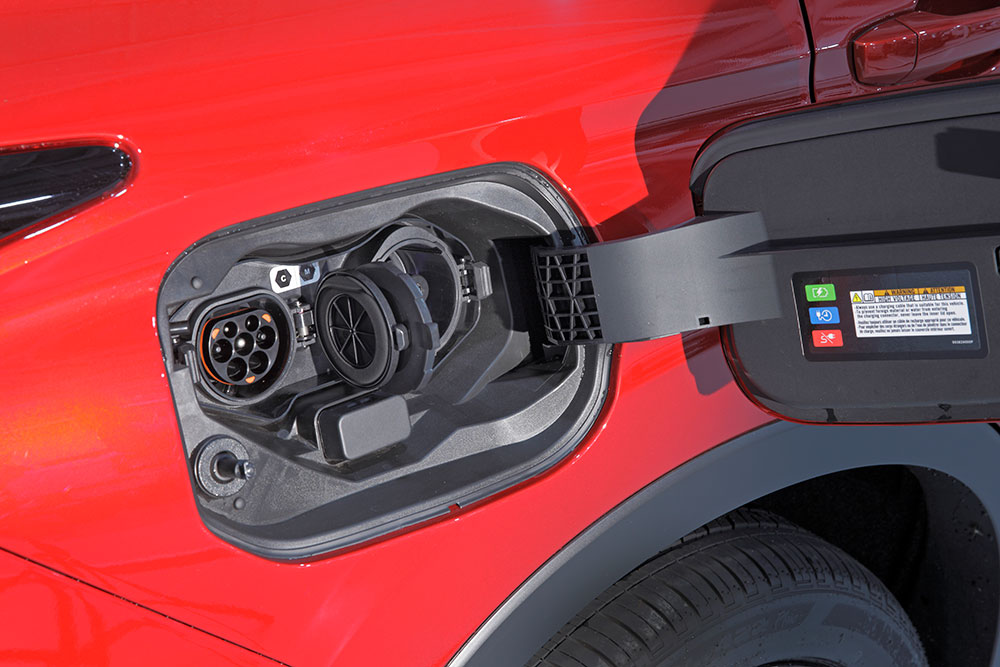
Charging is via dedicated ports on the vehicle’s right rear side and the Outlander PHEV comes with Mode 2 and Mode 3 charging cables as standard.
The Mode 2 cable suits standard 240V AC charging, while the Mode 3 cable suits fast 240V AC via a dedicated home charger.
An additional CHAdeMO port enables Mode 4 DC rapid charging.
Indicative 0-100% charging time for the 20.0kWh lithium-ion battery is 12 hours on standard 240V AC domestic (Mode 2), or 6.5 hours on a 240AV AC fast charge (Mode 3). A 0-80% charge on a DC fast charger (Mode 4) takes 38 minutes.
The new Outlander PHEV also features bi-directional charging capability which allows it to be used as a mobile battery storage system.
Using this feature along with an approved bi-directional Electric Vehicle Supply Equipment (EVSE), allows energy stored in the PHEV’s drive battery to be discharged back into the grid (vehicle-to-grid), or to power a home or other property (vehicle-to-home) that is not connected to the grid.
Outlander PHEV Aspire, Exceed and Exceed Tourer variants also have a vehicle-to-load feature that allows users to draw electricity from the vehicle’s battery to power equipment such as camping gear or domestic appliances, via the vehicle’s on-board 240V AC three-pin power points.
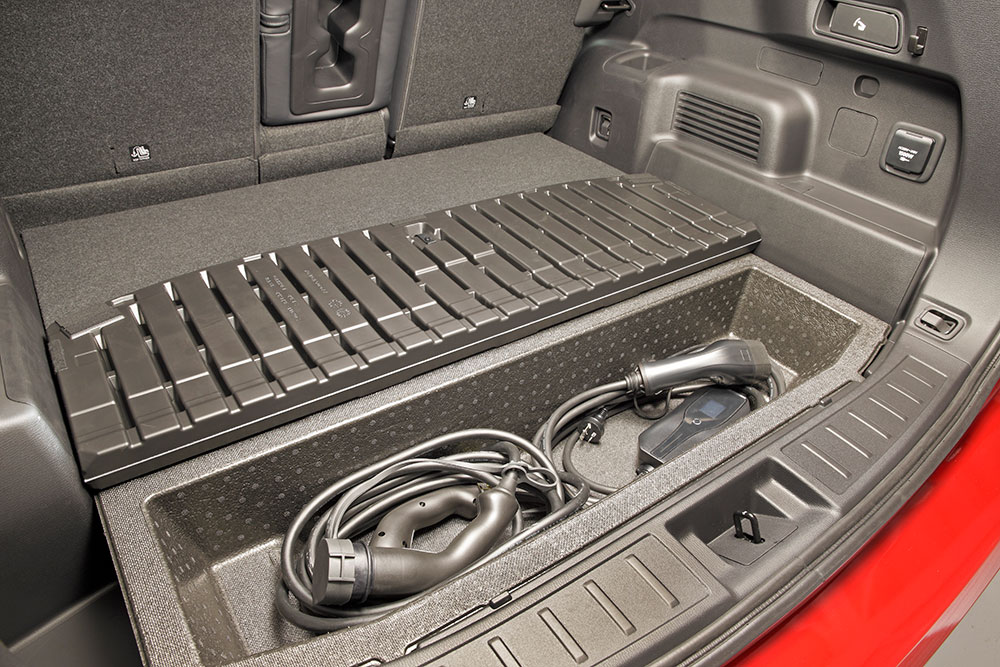
The new Outlander PHEV features the same updated interior and exterior design changes that debuted on the fourth-generation internal combustion models launched last November.
The PHEV also gets that same five-star ANCAP score as its stablemates, tested against the latest 2022 safety protocols.
Standard safety equipment includes forward collision mitigation system, with pedestrian and daytime cyclist detection, predictive forward collision mitigation, emergency lane assist, lane departure prevention, lane departure warning, blind spot warning, traffic sign recognition and driver attention alert.
Passive safety equipment includes driver and passenger front, centre and side airbags, driver’s knee airbag, first- and second-row curtain airbags.
The Outlander PHEV is covered by Mitsubishi’s 10-year/200,000km manufacturer’s warranty, and comes with 10-year Capped Price Servicing, and up to four years’ complimentary roadside assist, provided scheduled servicing is done through the company’s authorised dealer network. The drive battery is covered by an eight-year, 160,000km warranty.
Know you're covered with RACQ Car Insurance
Related topics
Things to note
The information in this article has been prepared for general information purposes only and is not intended as legal advice or specific advice to any particular person. Any advice contained in the document is general advice, not intended as legal advice or professional advice and does not take into account any person’s particular circumstances. Before acting on anything based on this advice you should consider its appropriateness to you, having regard to your objectives and needs.
Insurance Products (excluding Travel Insurance) are issued by RACQ Insurance Limited ABN 50 009 704 152 (RACQI) and arranged by its agent, RACQ Distribution Services Pty Ltd (RDS) ABN 35 116 361 650, AFSL 567130 and RDS' authorised representatives (including RACQ Operations Pty Ltd ABN 80 009 663 414, AR No. 234978 (RACQO). Conditions, limits and exclusions apply. RDS and RACQO are in the RACQ group of companies. One of the companies in the RACQ group of companies has a minority shareholding in RACQI.
RDS and RACQO have not taken your personal objectives, circumstances or needs into account when preparing advice regarding insurance products and you will need to consider whether the advice is appropriate for you. Read the Product Disclosure Statement (PDS) and any applicable Supplementary PDS before making a purchase decision on this product. You can also access our Target Market Determinations on this website. RDS receives a commission from RACQI for the policies it arranges. RACQO receives fees paid for services it provides to RDS. Further details about remuneration are available on request prior to purchasing.
Banking and loan products issued by Members Banking Group Limited ABN 83 087 651 054 AFSL/Australian credit licence 241195 trading as RACQ Bank. Terms, conditions, fees, charges and lending policies apply. This is general advice only and may not be right for you. This information does not take your personal objectives, circumstances or needs into account. Read the disclosure documents for your selected product or service, including the Financial Services Guide and the Terms and Conditions, and consider if appropriate for you before deciding.
Except for RACQ Bank, any RACQ entity referred to on this page is not an authorised deposit-taking institution for the purposes of the Banking Act 1959 (Cth). That entity’s obligations do not represent deposits or other liabilities of RACQ Bank. RACQ Bank does not guarantee or otherwise provide assurance in respect of the obligations of that entity, unless noted otherwise.
RACQ Bank subscribes to the Customer Owned Banking Code of Practice which establishes higher standards than the law requires. The Code reflects modern consumer expectations and developments in approaches to issues such as consumer vulnerability, guarantors, and supporting customers through financial hardship. Please read our Customer Owned Banking Code of Practice page for more information.
RACQ Operations Pty Ltd (ABN 80 009 663 414 AR 000234978) and Members Travel Group Pty Ltd (ABN 45 144 538 803 AR 000432492) are acting as an Authorised Representative of the issuer of the insurance, Tokio Marine & Nichido Fire Insurance Co., Ltd. (ABN 80 000 438 291 AFSL 246 548). Any advice set out above is general in nature only, and does not take into account your objectives, financial situation or needs. Before purchasing any travel products, please consider the RACQ Travel Insurance Product Disclosure Statement (PDS) and the Target Market Determinations (TMDs) that apply to these products. Whilst the PDS outlines the Terms and Conditions of these products, the TMDs outline the intended class of customers that comprise the target market for these travel products. This will allow you to consider which products best suit your objectives, financial situation and needs and consider the products appropriateness to your personal circumstances. TMDs also outline matters involving the distribution and the review of these products. The PDS, Supplementary PDS and TMDs for each travel product can be found here.

